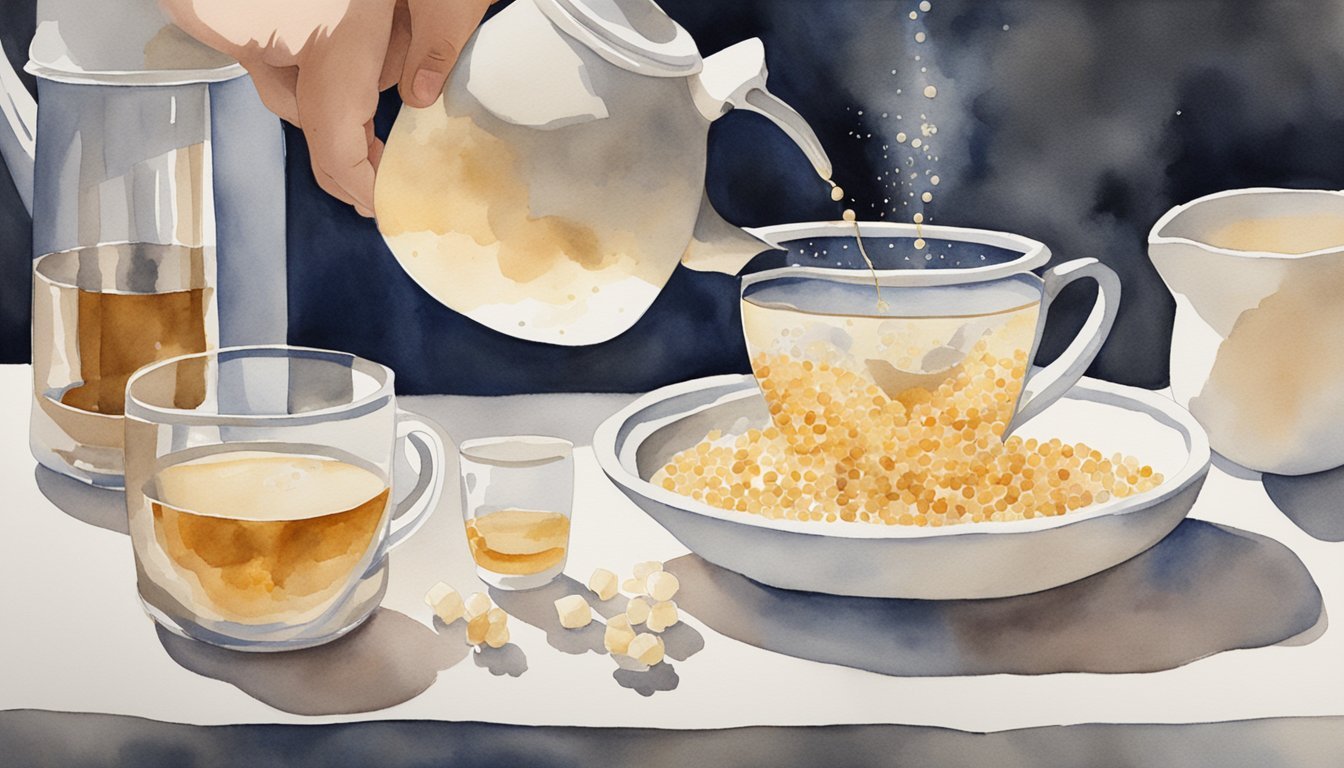History and Origin of Bubble Tea
Bubble tea’s journey began in Taiwan and traversed the globe, evolving from a local specialty to a worldwide phenomenon. This section uncovers the origins of the beverage and its ascent to global popularity.
The Birth in Taiwan
The story of bubble tea starts in the early 1980s in Taiwan. Two tea houses, Hanlin Tea Room and Chun Shui Tang, are credited with the invention of the drink. Bubble tea, sometimes known as pearl milk tea or boba, initially emerged as a playful twist on traditional tea. The founder of Hanlin, Tu Tsong-He, added white tapioca balls to tea, while Lin Hsiu Hui, the product manager of Chun Shui Tang, incorporated the now-signature “bubbles” – black tapioca pearls – into her drink during a staff meeting. This addition sparked a new trend that would soon become a defining characteristic of the beverage. Alongside these pearls, other flavors like taro began gaining traction, adding a unique twist to the drink’s variety.
Global Spread and Popularity
From its creation in Taiwan, bubble tea steadily gained popularity, making its way to various parts of the world. Notably, it reached the United States through Taiwanese immigrants in the 1990s, finding a foothold in areas with a high Asian diaspora, such as California’s Los Angeles County and New York’s Chinatown. The drink didn’t stop there; it spread to other western cities including London and Berlin, often reflecting local tastes and trends in its iterations. In Southeast Asia, the drink’s growth was explosive, with orders witnessing a tremendous increase. As of 2024, bubble tea continues to enjoy a devoted following, characterized by its ever-evolving nature and ability to adapt to diverse cultures and preferences worldwide.
Does Caffeine in Bubble Tea Have Any Impact on Growth?
Research on caffeine and growth suggests that excessive caffeine intake during crucial developmental periods may hinder growth. While bubble tea can contain moderate amounts of caffeine, it’s important to consume it mindfully, especially for younger individuals. Balancing enjoyment with health considerations is key to ensuring proper growth and development.
Making Bubble Tea: Ingredients and Preparation

Bubble tea is a delightful Taiwanese drink that has gained worldwide popularity for its unique combination of sweetness, chewiness, and variety of flavors.
Classic Bubble Tea Composition
The fundamental components of bubble tea include a tea base, typically black tea or green tea, and tapioca pearls which give it a signature chewy texture. To prepare the pearls, one of the key steps is boiling the tapioca balls, which are derived from cassava root, until they become tender and achieve their characteristic ‘Q’ – a term used to describe the perfect chewy texture. After cooling, the pearls are sweetened with a simple syrup or brown sugar syrup to enhance their flavor. Alongside the pearls, prepared tea is mixed with milk or a non-dairy alternative like almond milk or oat milk, and a sweetener such as honey or sugar syrup. Here’s a brief overview of the process:
- Brew the preferred tea stronger than usual.
- Boil tapioca pearls and coat them in sweetener.
- Mix the cooled tea with milk and sweetener.
- Add tapioca pearls and ice cubes to the drink.
For the tea, strong black pearl tea is popular, while matcha green tea adds a Japanese twist. The milk can be whole milk, soy milk, or any of the mentioned alternatives, offering variations in flavor and calcium and protein content. To serve, the tea mixture and pearls are poured into a glass topped with ice cubes often through a big straw that allows the pearls to be sipped alongside the liquid part of the drink.
Learn how to make your own bubble tea.
Variations and Modern Twists
The world of bubble tea offers an endless array of variations to suit any taste. From fruit flavors like mango, pineapple, and lychee that provide a refreshing twist, to decadent dessert-inspired versions with chocolate, coco, and pudding. Drinkers can also find bubble teas with jelly or popping boba that burst with flavor. For a contemporary and savory option, cheese foam bubble teas have also become popular.
Modern bubble tea enthusiasts enjoy experimenting with sweeteners, utilizing options like brown sugar, honey, and condensed milk, while also sometimes opting for more exotic sugars such as kumquat or ginger syrup. The fruit jelly or grass jelly additions offer vegans and those with dairy intolerances a delightful alternative to the usual tapioca pearls. Another exciting variant is matcha bubble tea, which combines the rich, earthy flavors of matcha with the sweet, creamy contrasts typical of bubble tea.
For a new twist on the classic composition, taro milk tea integrates the sweet and nutty flavors of taro root, providing another layer of taste and texture. Popular among health-conscious consumers is the use of red beans, sago, or coconut jelly as boba alternatives, which can provide additional nutrients like protein and calcium.

